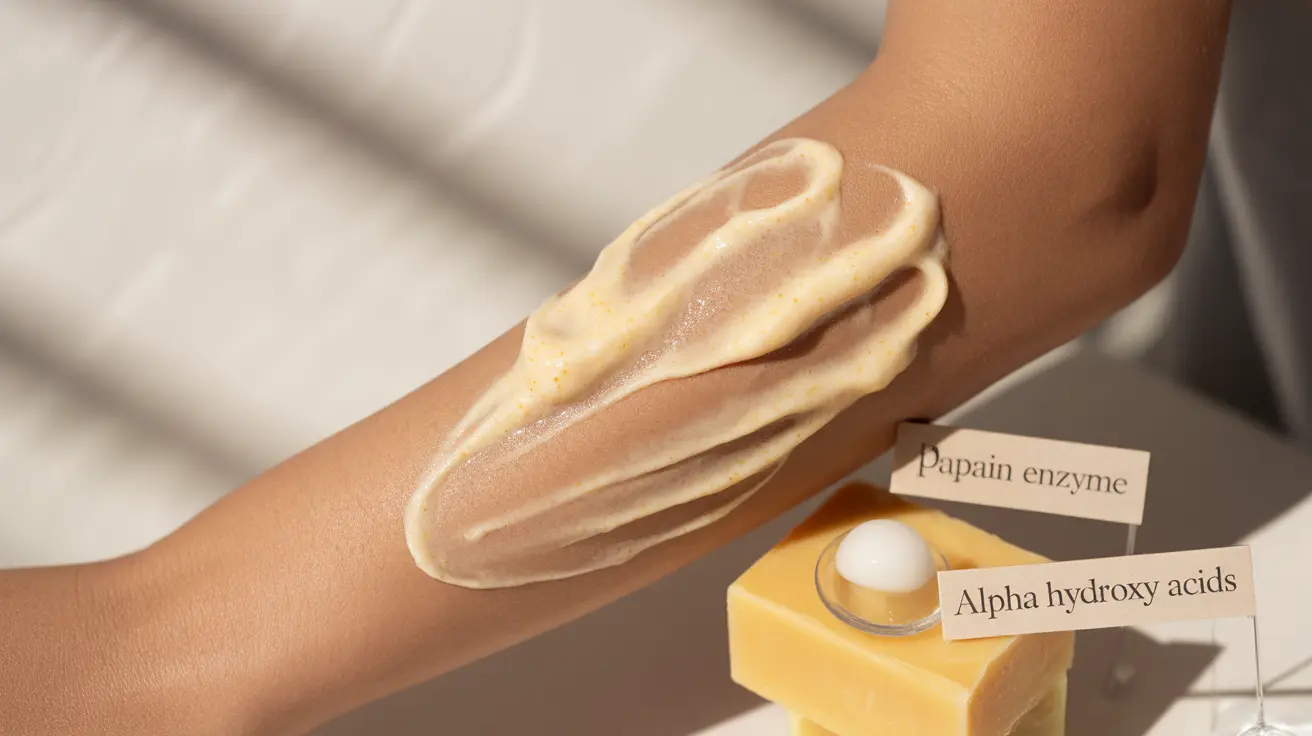Papaya soap has gained significant attention in the skincare community for its potential skin-lightening properties. This natural product, derived from the enzyme-rich papaya fruit, has become increasingly popular among those seeking a gentler approach to achieving a more even skin tone. But does papaya soap actually deliver on its promises? Let's explore the science behind this skincare product and what you can realistically expect from its use.
How Papaya Soap Works on Skin
The active ingredient in papaya soap is papain, a natural enzyme found in papaya fruit. This enzyme works as a gentle exfoliant, helping to remove dead skin cells and promote cell turnover. Additionally, papaya contains natural compounds like vitamin C and beta-carotene, which may contribute to its skin-brightening effects.
The Science Behind Papaya's Skin-Lightening Properties
Papain works by breaking down inactive proteins on the skin's surface, effectively removing the outermost layer of dead skin cells. This process can help reveal fresher, brighter skin underneath and may contribute to a more even skin tone over time. The natural vitamins and antioxidants in papaya also help protect the skin from environmental damage while supporting healthy cell regeneration.
Benefits Beyond Skin Lightening
Papaya soap offers multiple skincare benefits beyond its potential lightening effects. Regular use may help:
- Remove excess oil and unclog pores
- Reduce the appearance of acne and blemishes
- Improve skin texture and smoothness
- Provide gentle exfoliation
- Support overall skin health
Using Papaya Soap Safely and Effectively
To maximize benefits while minimizing potential irritation, it's important to introduce papaya soap gradually into your skincare routine. Start by using it 2-3 times per week, gradually increasing frequency based on your skin's response. Always perform a patch test before full application to ensure your skin doesn't react negatively.
Best Practices for Application
For optimal results, follow these steps:
- Wet your face with lukewarm water
- Gently lather the soap in your hands
- Apply to skin using circular motions
- Leave on for 30 seconds to 1 minute
- Rinse thoroughly with cool water
- Follow with a moisturizer
Understanding Realistic Results
While papaya soap can contribute to brighter, more even-toned skin, results vary among individuals and typically develop gradually over time. Most users report noticeable improvements after 4-6 weeks of consistent use, though this timeframe can vary based on skin type and concerns.
Frequently Asked Questions
Does papaya soap effectively lighten skin, and how long does it take to see results? Papaya soap can gradually lighten skin through its natural enzymatic action, typically showing initial results within 4-6 weeks of consistent use. However, results vary depending on individual skin type and concerns.
What are the benefits of using papaya soap for skin conditions like acne and hyperpigmentation? Papaya soap can help manage acne and hyperpigmentation through its natural exfoliating properties, which remove dead skin cells and help unclog pores. The antioxidants in papaya also support skin healing and may help fade dark spots over time.
Is papaya soap safe for sensitive skin, and what precautions should I take before using it? While generally safe, those with sensitive skin should perform a patch test first and start with limited use. If irritation occurs, discontinue use immediately. It's best to begin with twice-weekly applications and adjust based on your skin's response.
Can papaya soap really reduce the appearance of dark spots and acne scars, and is it better than other lightening soaps? Papaya soap can help fade dark spots and acne scars through its natural exfoliating and brightening properties. While it may be gentler than some chemical-based alternatives, results might take longer compared to stronger lightening products.
How often should I use papaya soap to achieve the best skin lightening and brightening effects without causing irritation? For most people, using papaya soap once daily is optimal. However, start with 2-3 times per week and gradually increase frequency based on your skin's tolerance. Always moisturize after use and protect your skin with sunscreen during the day.




